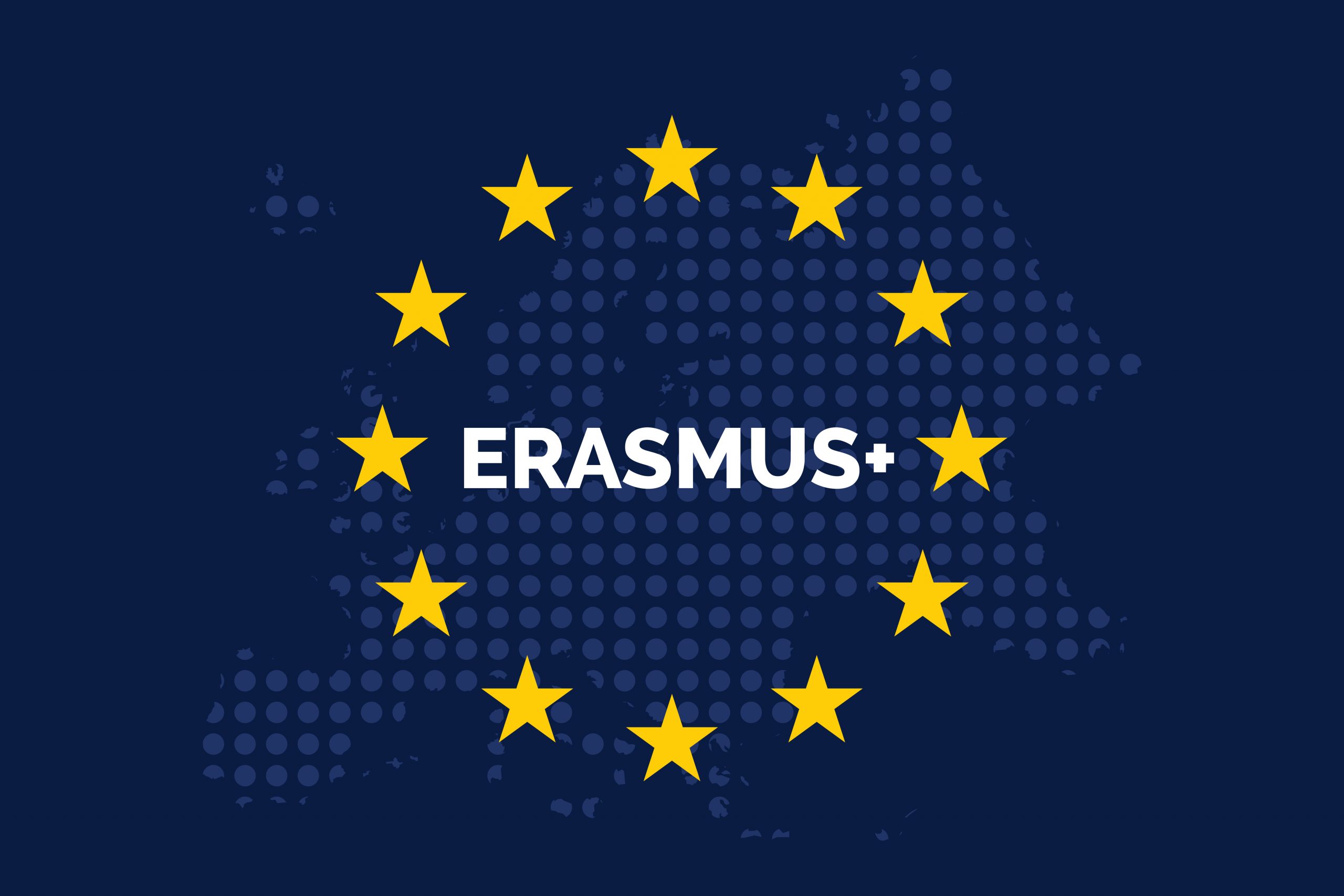بحث حول برنامج التعاون الدولي إيراسموس (Erasmus)
**مقدمة:**
يعد برنامج إيراسموس (Erasmus) واحدًا من أهم برامج التعاون الدولي في مجال التعليم العالي، حيث يسعى إلى تعزيز التبادل الأكاديمي والتعاون بين المؤسسات التعليمية في أوروبا وخارجها. تم إطلاق البرنامج في عام 1987، ومنذ ذلك الحين أصبح محورًا رئيسيًا للتنقل الطلابي وتبادل الخبرات الأكاديمية والثقافية.
**أهداف البرنامج:**
يهدف برنامج إيراسموس إلى تحقيق عدة أهداف، من بينها:
1. **تشجيع التنقل الأكاديمي:** يتيح للطلاب والأساتذة التنقل بين الجامعات المختلفة داخل أوروبا، مما يعزز التبادل الثقافي والفكري.
2. **تعزيز الجودة التعليمية:** من خلال تشجيع التعاون بين مؤسسات التعليم العالي، يسعى البرنامج إلى تحسين جودة التعليم والبحث.
3. **تعزيز الفهم الثقافي:** يشجع البرنامج على تقوية التفاهم بين الثقافات المختلفة من خلال التفاعل بين الطلاب من خلفيات متنوعة.
4. **تطوير المهارات العملية:** يوفر للطلاب فرصة لتطوير مهاراتهم العملية والشخصية من خلال العمل أو التدريب في الخارج.
**مكونات البرنامج:**
يتضمن برنامج إيراسموس العديد من الأنشطة والمكونات التي تهدف إلى دعم التعليم العالي والتعاون الدولي، من أبرزها:
1. **التنقل الطلابي:** يسمح للطلاب بقضاء فترة من دراستهم في جامعة أخرى ضمن الدول المشاركة في البرنامج مع احتساب تلك الفترة في مؤسساتهم الأم.
2. **التدريب المهني:** يتيح الفرصة للطلاب للعمل أو التدريب في شركات أو مؤسسات في الخارج، مما يسهم في تطوير مهاراتهم المهنية.
3. **تبادل الأكاديميين:** يوفر البرنامج فرصًا للأساتذة والباحثين للتنقل بين الجامعات لتبادل الخبرات وتطوير البحوث المشتركة.
**الدول المشاركة:**
في البداية، كان برنامج إيراسموس يقتصر على دول الاتحاد الأوروبي، ولكن مع مرور الوقت توسع ليشمل دولًا أخرى خارج الاتحاد من خلال مبادرات مثل إيراسموس+، الذي تم إطلاقه في 2014. تشمل هذه الدول العديد من دول أوروبا وخارجها، بما في ذلك دول شمال إفريقيا، الشرق الأوسط، آسيا وأمريكا اللاتينية.
**أهمية البرنامج:**
يعتبر برنامج إيراسموس أداة رئيسية لتقوية العلاقات الأكاديمية والثقافية بين الدول. من خلال توفير الفرص التعليمية والتدريبية في الخارج، يسهم البرنامج في إعداد طلاب أكثر تأهيلاً لسوق العمل الدولي. بالإضافة إلى ذلك، فإنه يعزز من قدرة الجامعات على التعاون مع مؤسسات أجنبية مما يسهم في تطوير أنظمتها الأكاديمية.
**التمويل والدعم:**
يوفر برنامج إيراسموس دعمًا ماليًا للطلاب والجامعات لتغطية تكاليف السفر والمعيشة أثناء فترات التنقل أو التدريب. تعتمد هذه المساعدات على نوع البرنامج والبلد المضيف والمدة الزمنية للبرنامج.
**التحديات:**
رغم النجاح الكبير لبرنامج إيراسموس، يواجه بعض التحديات مثل:
1. **التفاوت في الفرص:** قد لا تكون جميع الجامعات أو الدول تمتلك نفس الإمكانيات للاستفادة من البرنامج بشكل متساوٍ.
2. **العوائق اللغوية:** تشكل اللغة في بعض الأحيان تحديًا أمام الطلاب الذين يختارون الدراسة في دول تختلف لغتها عن لغتهم الأم.
3. **التكيف الثقافي:** قد يجد بعض الطلاب صعوبة في التكيف مع ثقافات وأنظمة تعليمية مختلفة.
الخاتمة:
يعتبر برنامج إيراسموس من أهم برامج التعاون الدولي في مجال التعليم العالي، حيث يتيح للطلاب والأساتذة فرصًا لتطوير مهاراتهم الأكاديمية والمهنية، وفي نفس الوقت يعزز من فهمهم للثقافات الأخرى. يستمر البرنامج في النمو والتوسع ليشمل المزيد من الدول والشركاء، مما يجعله عنصرًا محوريًا في تعزيز التعاون الدولي والتفاهم الثقافي بين الأمم.
**Research on the Erasmus International Cooperation Program**
**Introduction:**
The Erasmus program is one of the most important international cooperation programs in higher education, aiming to promote academic exchange and collaboration between educational institutions in Europe and beyond. Launched in 1987, it has since become a key pillar for student mobility and the exchange of academic and cultural experiences.
**Program Objectives:**
The Erasmus program seeks to achieve several objectives, including:
1. **Encouraging academic mobility:** It allows students and professors to move between different universities within Europe, enhancing cultural and intellectual exchange.
2. **Enhancing educational quality:** By encouraging cooperation between higher education institutions, the program aims to improve the quality of education and research.
3. **Promoting cultural understanding:** The program fosters cultural understanding through interaction among students from diverse backgrounds.
4. **Developing practical skills:** It provides students with the opportunity to develop their practical and personal skills through work or internships abroad.
**Program Components:**
The Erasmus program includes various activities and components aimed at supporting higher education and international cooperation, most notably:
1. **Student mobility:** It allows students to spend a period of their studies at another university in participating countries, with the period being recognized by their home institution.
2. **Professional internships:** It offers students the opportunity to work or train at companies or organizations abroad, contributing to their professional development.
3. **Academic exchange:** The program offers opportunities for professors and researchers to move between universities to exchange expertise and collaborate on joint research.
**Participating Countries:**
Initially, the Erasmus program was limited to European Union countries, but over time it expanded to include other countries outside the EU through initiatives like Erasmus+, launched in 2014. These countries include many across Europe and beyond, such as North African countries, the Middle East, Asia, and Latin America.
**Program Importance:**
The Erasmus program is a key tool for strengthening academic and cultural relations between countries. By providing educational and training opportunities abroad, it helps prepare students for the international job market. Additionally, it enhances universities’ ability to collaborate with foreign institutions, contributing to the development of their academic systems.
**Funding and Support:**
The Erasmus program provides financial support to students and universities to cover travel and living expenses during periods of mobility or internships. This support depends on the type of program, the host country, and the program’s duration.
**Challenges:**
Despite its great success, the Erasmus program faces some challenges, such as:
1. **Inequality of opportunities:** Not all universities or countries have the same capacity to benefit equally from the program.
2. **Language barriers:** Language can sometimes pose a challenge for students choosing to study in countries with a different language from their native one.
3. **Cultural adaptation:** Some students may find it difficult to adapt to different cultures and educational systems.
**Conclusion:**
The Erasmus program is one of the most important international cooperation programs in higher education, offering students and professors opportunities to develop their academic and professional skills while enhancing their understanding of other cultures. The program continues to grow and expand to include more countries and partners, making it a crucial element in promoting international cooperation and cultural understanding between nations.
اعداد مسؤول الموقع الالكتروني للكلية


